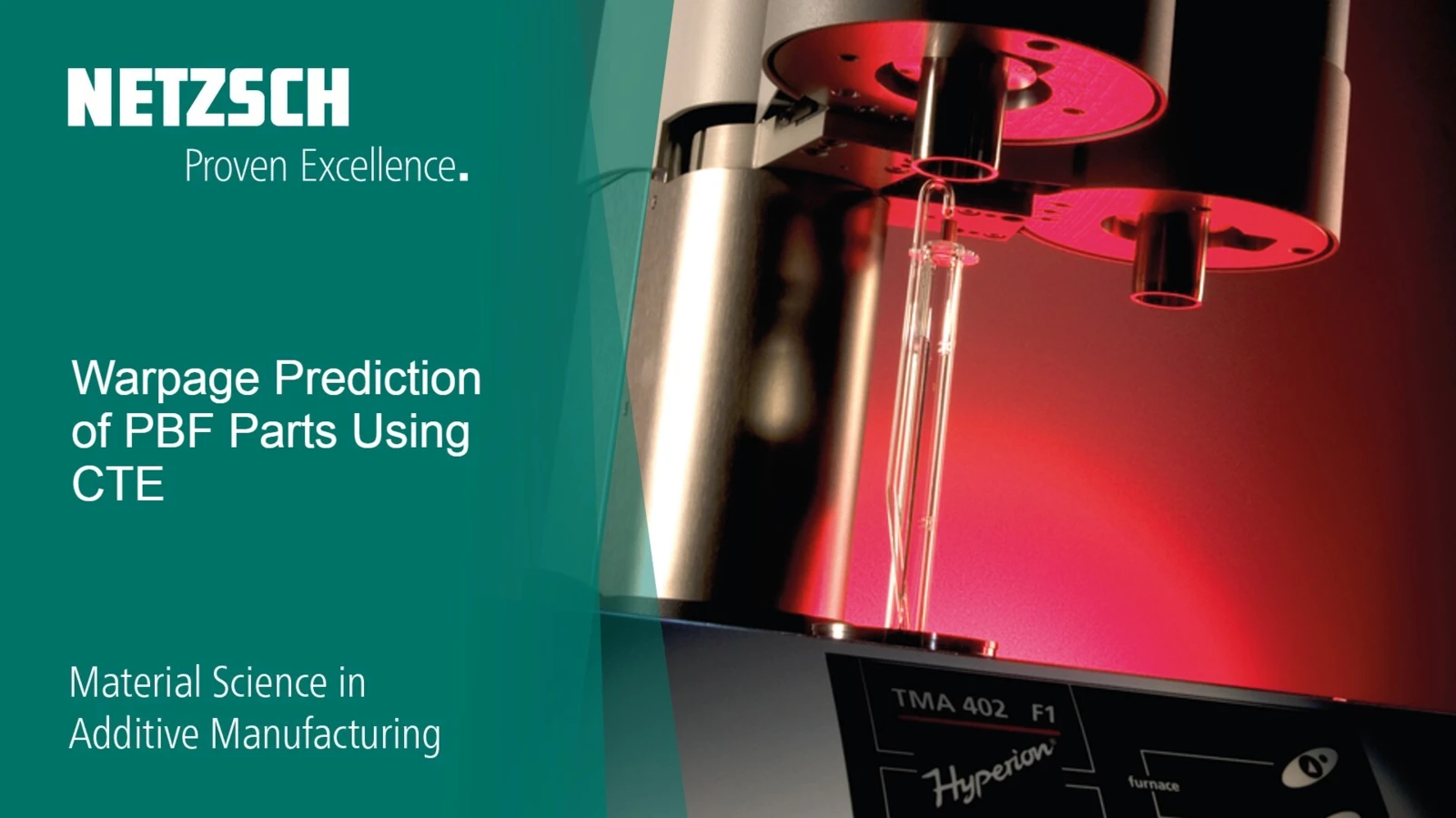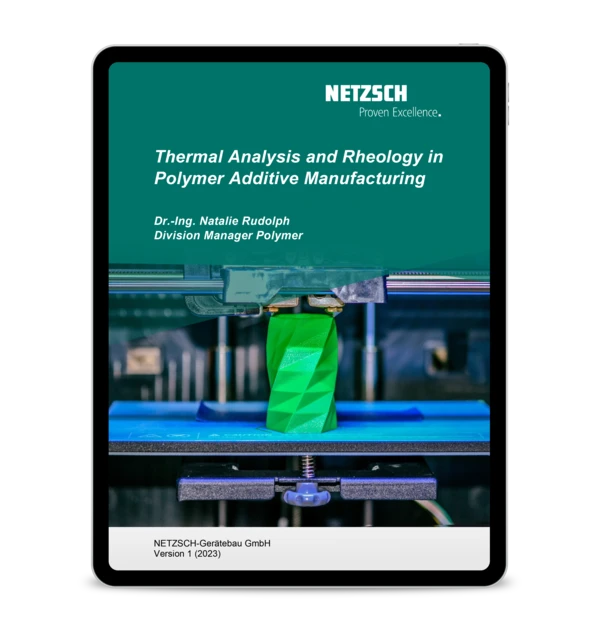
06.10.2021 by Aileen Sammler, Dr. Natalie Rudolph
Материаловедение в аддитивном производстве: Прогнозирование деформации деталей PBF с использованием CTE
Остаточное напряжение может привести к деформации 3D-печатной детали. Динамический механический и термомеханический анализ позволяют оценить коробление. В этом видео доктор Натали Рудольф объясняет, как коэффициент теплового расширения (CTE), измеренный с помощью термомеханического анализа, может быть использован для прогнозирования и расчета деформации.
В наших последних сериях мы сосредоточились в основном на тепловом поведении материалов, измеренном с помощью дифференциальной сканирующей калориметрии (ДСК). Сегодня доктор Натали Рудольф расскажет В нашем последнем видео мы говорили о том, как остаточное напряжение может привести к деформации 3D-печатной детали и как динамический механический анализ (DMA) может помочь оценить остаточное напряжение. Сегодня доктор Натали Рудольф объясняет, как можно предсказать коробление с помощью коэффициента теплового расширения (CTE) с помощью термомеханического анализа (TMA).
Тема этой недели: Прогнозирование деформации деталей из PBF с помощью CTE
Мы используем термомеханический анализ (ТМА) для измерения деформации вещества под действием неосциллирующей нагрузки в зависимости от температуры и времени, когда вещество подвергается контролируемой температурной программе в определенной атмосфере.
Узнайте о:
- Как оценить и рассчитать коэффициент теплового расширения CTE с помощью метода термомеханического анализа
- Использование данных термомеханического анализа для прогнозирования деформации детали, напечатанной с использованием порошка PA12
- Эффект скручивания при сплавлении порошкового слоя

Бесплатная электронная книга
Термический анализ и реология в аддитивном производстве полимеров
Откройте для себя секреты, лежащие в основе революционных возможностей АМ! Наша новая электронная книга глубоко погружается в суть АМ, раскрывая возможности надежных методов определения характеристик материалов, в частности термического анализа и реологии.
Больше приложений для аддитивного производства NETZSCH
Пропустили серию? Узнайте больше об аддитивном производстве, посмотрев наши серии на YouTube: #ambynetzsch - YouTube
В следующем эпизоде мы расскажем об измерении теплопроводности деталей из PBF с помощью LFA.